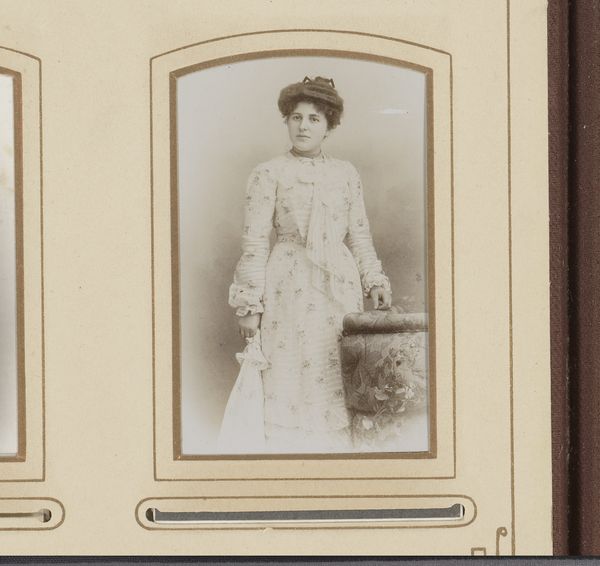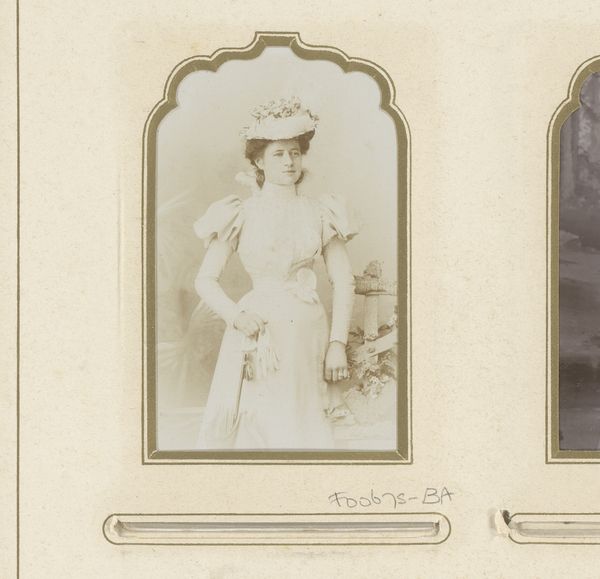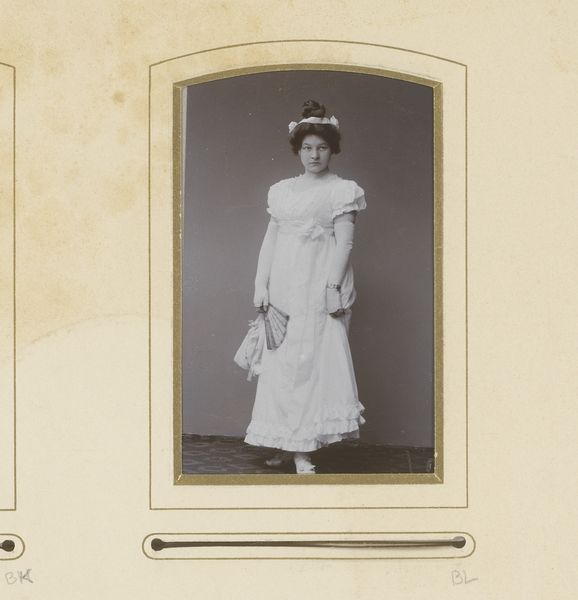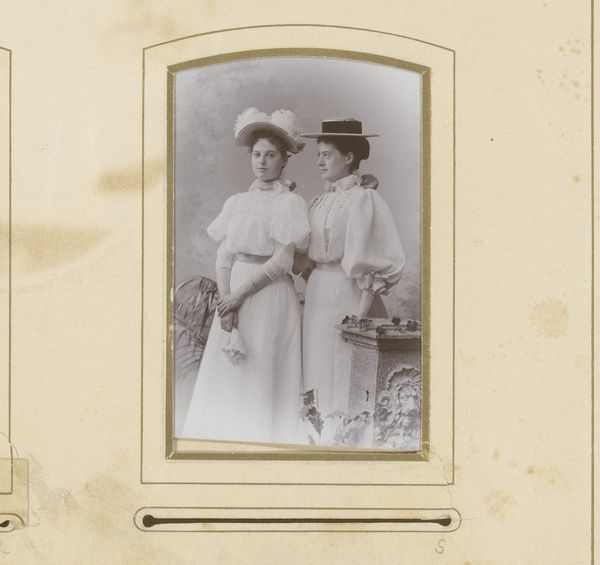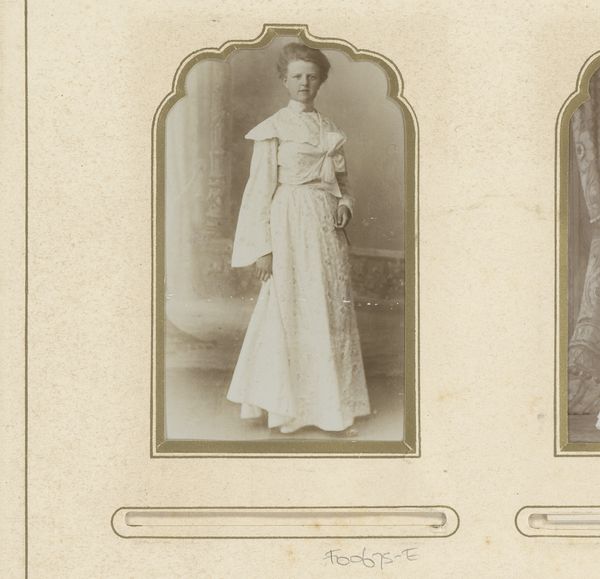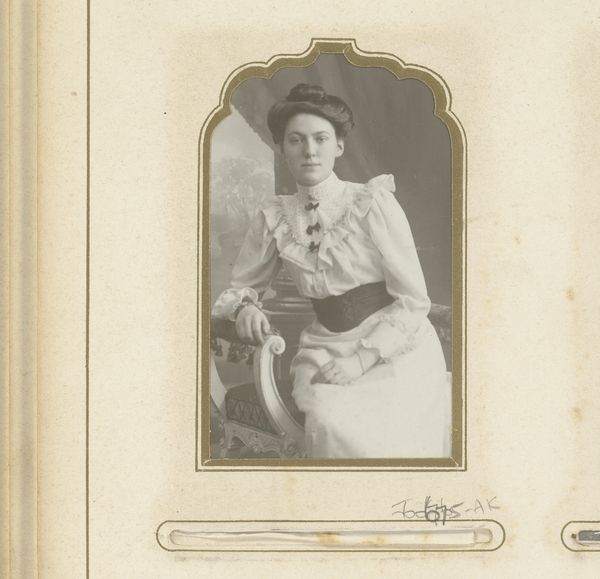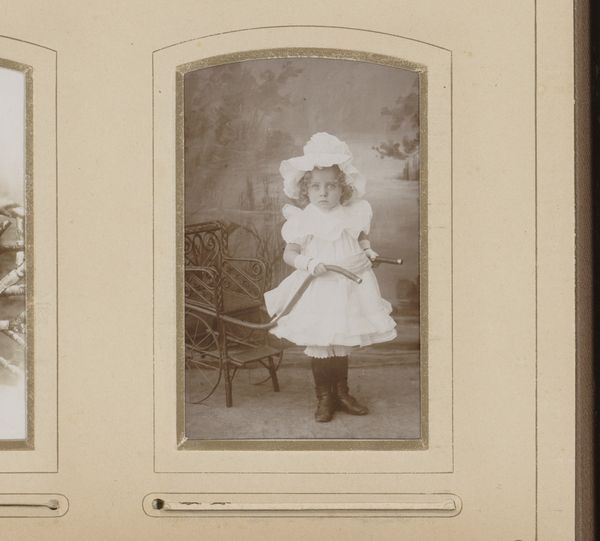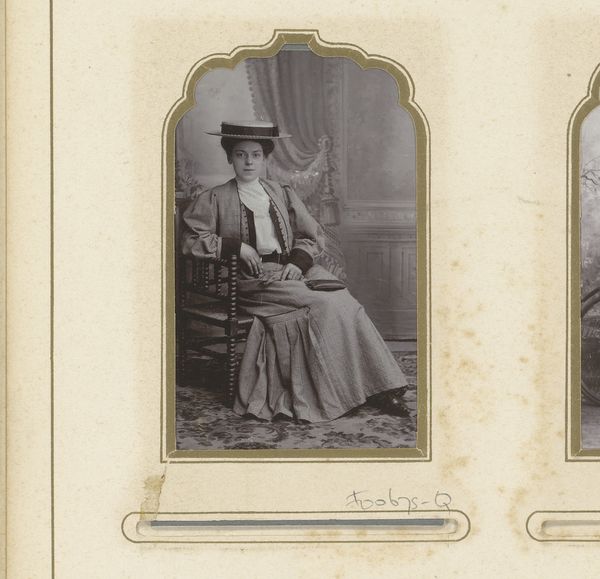
Portret van een staande vrouw met handschoenen, paraplu en hoed 1892 - 1906
0:00
0:00
machielhendricusladde
Rijksmuseum
photography
#
portrait
#
photography
#
historical photography
Dimensions: height 85 mm, width 51 mm
Copyright: Rijks Museum: Open Domain
Curator: Here we see Machiel Hendricus Laddé’s portrait of a standing woman, created sometime between 1892 and 1906. It's a photographic print, currently residing here at the Rijksmuseum. Editor: The elegance of it strikes me immediately. There's a subtle asymmetry in her pose, but her stern gaze grounds the image. The tonal range in the photograph seems quite narrow though, doesn’t it? Curator: Indeed. Laddé plays with texture—the delicate lace, the smoothness of the parasol, the feathery embellishments on her hat—to create visual interest without strong contrast. Notice how the light defines the planes of her face. Editor: I’m curious about the conventions that governed female portraiture during this time. Was this how women presented themselves to society or was there pressure? We can see the high collar and the cinched waist, reflecting social codes of the era. It is important to remember that these choices are not apolitical. Curator: It speaks to a moment of shifting class and gender roles in society, reflected here through dress and demeanor. There’s an intentional use of backdrop, soft and out of focus, but suggesting an engagement with the outside world beyond the confines of her domestic life. The details matter, her lace trimmed collar, the way she holds the parasol as if it's a status symbol as much as an object. Editor: It seems this could almost function as a trade card of some sort: announcing this young lady’s arrival in a given social season? This studio portrait, placed within this ornate decorative surround, hints at its wider use and function. How it can function as a calling card of sorts to mark and position someone of high status. Curator: Absolutely. While Laddé might have approached the project with his own intentions as the photographer, this sitter must have had expectations for the artwork that align with her place and role. It is precisely the dance between maker, sitter, and cultural conventions that creates an enduring portrait. Editor: It allows for discussion and thinking about broader society by decoding the historical implications through its forms and composition, that much is true.
Comments
No comments
Be the first to comment and join the conversation on the ultimate creative platform.
